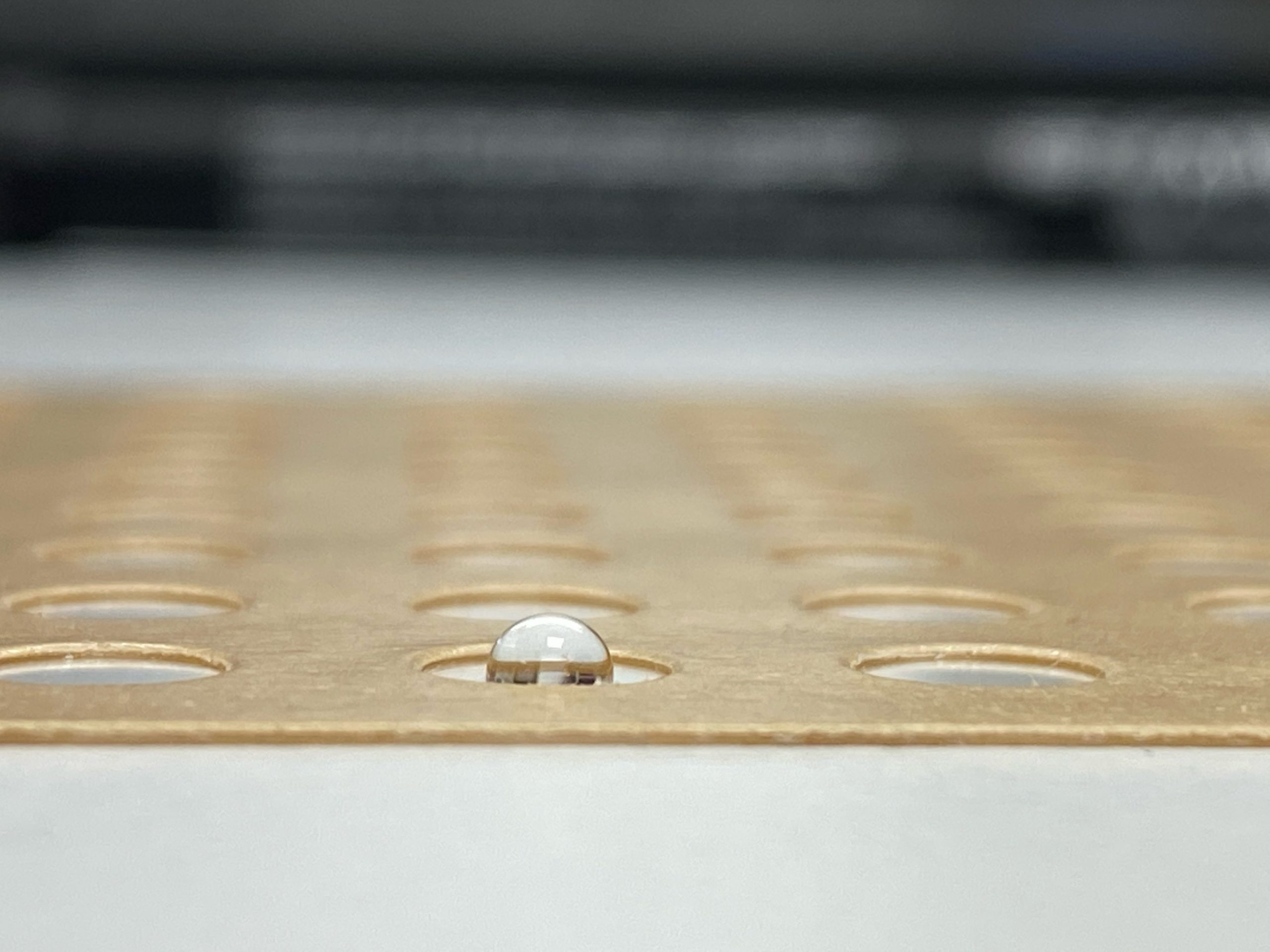
Droplet beauty

For X-ray crystallography, scientists create protein crystals by evaporating water from droplets of protein solution – similar to what happens when a drop of salt water or sugar solution dries up. Afterwards, they expose the crystals to X-rays. As the X-rays pass through the crystals, they form patterns that can be interpreted to determine the molecular structure of the protein. Because the molecules trapped in the crystal are aligned in a very regular way, the patterns produced by the X-rays can provide highly precise information about the location of individual atoms in the protein.
For some molecules, such as membrane proteins, obtaining crystals is particularly tricky, because their structure collapses as soon as it is removed from the cell membrane. To create a membrane-like environment for them, scientists use a mixture of lipids (fat molecules), water, and protein to create something called a lipid cubic phase. In many cases, this enables membrane proteins to form crystals while maintaining their original molecular structure.
Proteins are crystallised on crystallisation plates, like the one in this image, which Kim Bartels from the Löw group at EMBL Hamburg was working on. She took a highly concentrated solution of a molecule that interacts with the protein she was interested in, and place droplets of it on the plate. The volume of the droplet in the image is just 5 microlitres – five millionths of a litre – but it’s enough to grow good crystals. Once the water evaporates, the scientists will pipette on top of it another droplet with a volume fifty times smaller, containing the membrane protein. By doing this, they aim to obtain crystals in which the protein and the other molecule are bound together. This will enable them to determine how exactly the two molecules interact.
Credit: Andrey Gruzinov/EMBL
If you have a stunning picture of your science, your lab or your site, you can submit it here.


